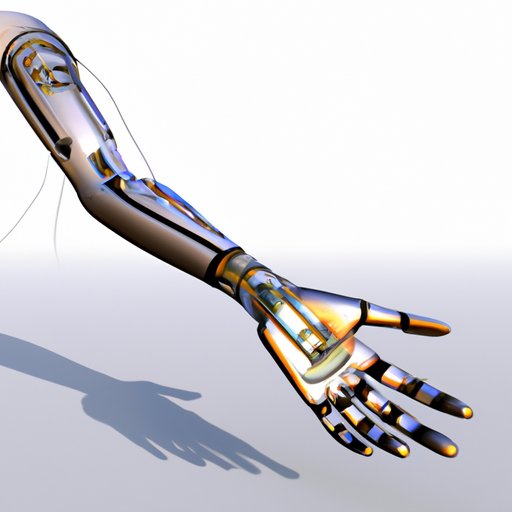Introduction
Bionic technology is the combination of human physiology with robotics and artificial intelligence to create machines that can mimic or exceed the capabilities of humans. It is a rapidly growing field of research and development, and it has the potential to revolutionize the way we live, work, and play. The aim of bionic technology is to improve upon existing technology by incorporating elements of human biology into the design and operation of machines and systems.
Bionic technology has the potential to significantly impact our lives. It can be used to improve medical treatments, enhance industrial and commercial processes, and even create entirely new products and services. As the technology advances, it could lead to the development of advanced prosthetics for those with physical disabilities, improved medical diagnostics, and even robots that can interact with humans in a natural way.
Benefits and Risks of Bionic Technology
There are several potential benefits associated with the use of bionic technology. For example, bionic technology can be used to create prosthetic limbs that can more accurately replicate the function of a real limb. This could help those with physical disabilities to regain mobility and independence. In addition, bionic technology can be used to create medical devices that can detect and diagnose diseases more accurately and quickly than traditional methods, potentially leading to earlier treatment and better patient outcomes.
However, there are also potential risks associated with bionic technology. These include the possibility of malfunctioning or incorrectly programmed devices, as well as the potential for misuse or abuse of the technology. In addition, some experts have raised concerns about the ethical implications of using bionic technology, such as the possibility of creating “cyborgs” that blur the line between human and machine.

Current and Potential Uses of Bionic Technology
The most common current use of bionic technology is in medical applications. Bionic technology is being used to create prosthetic limbs, cochlear implants, and other devices that can replace or supplement human body parts. In addition, bionic technology is being used to create medical devices that can detect and diagnose diseases more accurately than traditional methods.
In addition to medical applications, bionic technology is also being used in industrial and commercial processes. For example, bionic technology is being used to create robotic arms and legs that can perform tasks faster and more accurately than humans. In addition, bionic technology is being used to create autonomous vehicles and drones that can navigate their environment without the need for human input.
Finally, bionic technology is being used to create consumer products such as smart watches and fitness trackers. These devices can monitor vital signs and provide feedback on activity levels and health metrics, allowing users to make informed decisions about their health and wellbeing.

Comparing and Contrasting Different Types of Bionic Technology
There are two main types of bionic technology: mechanical and biological. Mechanical bionic technology is based on the principles of robotics and artificial intelligence, and it is typically used to create prosthetic limbs and other devices that can replace or supplement human body parts. Biological bionic technology is based on the principles of biotechnology and genetics, and it is typically used to create medical devices that can detect and diagnose diseases more accurately than traditional methods.
Mechanical bionic technology is typically seen as more reliable and durable than biological bionic technology, as it does not rely on living organisms to operate. However, biological bionic technology is typically seen as more accurate and sensitive than mechanical bionic technology, as it can detect subtle changes in the body that mechanical devices cannot. Ultimately, the type of bionic technology used will depend on the specific application and the desired outcome.
Conclusion
In conclusion, bionic technology is a rapidly advancing field of research and development that has the potential to revolutionize the way we live, work, and play. It has the potential to improve medical treatments, enhance industrial and commercial processes, and create entirely new products and services. While there are potential risks associated with the technology, such as malfunctioning or incorrectly programmed devices, these risks can be mitigated with careful planning and oversight. Ultimately, bionic technology has the potential to change the world in ways we can only imagine.
(Note: Is this article not meeting your expectations? Do you have knowledge or insights to share? Unlock new opportunities and expand your reach by joining our authors team. Click Registration to join us and share your expertise with our readers.)
